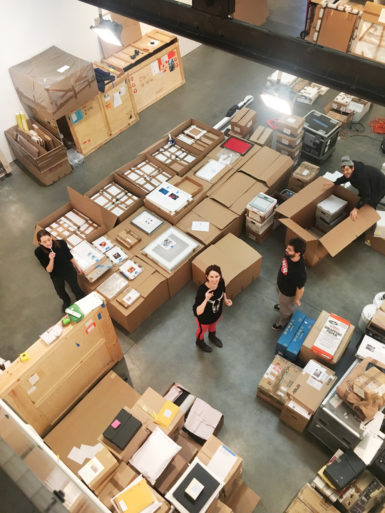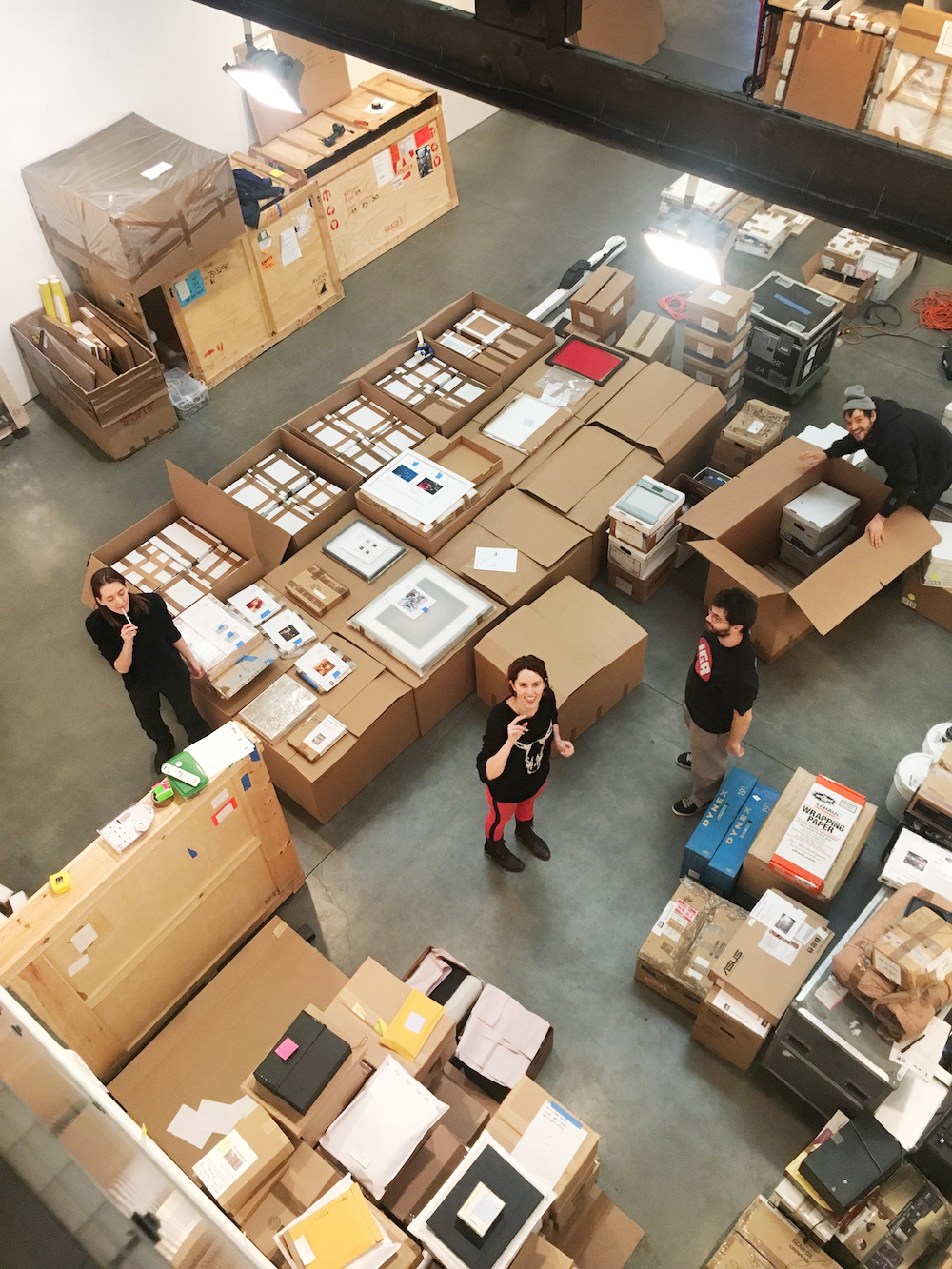[ad_1]

Andrea Rosen Gallery’s 525 West 24th Street space in New York filled with boxes holdings its archive, which Rosen is donating to the Smithsonian.
PHOTO: ANDREA ROSEN
When the veteran New York art dealer Andrea Rosen announced in 2017 that she would shutter her public exhibition spaces and stop representing living artists, it was a shockingly sudden end for a program that helped define contemporary art over 27 years. At the time, Rosen said that she would continue to operate privately, though, co-representing the work of Felix Gonzalez-Torres with David Zwirner, continuing to act as president of the Felix Gonzalez-Torres Foundation, and working on other projects. Now one of those quiet efforts has come to fruition.
The Smithsonian’s Archives of American Art said today that it is acquiring the papers of the Andrea Rosen Gallery as a gift, and that it will catalog its contents in the coming years. The records join those of more than 200 galleries from the past century in the United States that are preserved by the AAA, including those of storied enterprises like the Leo Castelli, Downtown, and Sidney Janis galleries. Rosen is the first major New York gallery established in the 1990s to join their company.
The files measure an estimated 250 linear feet, the AAA’s director, Kate Haw, said in a phone interview (the equivalent of about 250 banker’s boxes), though its exact size may change as materials are reviewed. There are also several terabytes of information. The dealer and her staff spent some 17 months readying the material for transport to the Smithsonian. “Rosen was a meticulous record keeper,” Haw said. “The photo documentation is incredibly deep, and the correspondence with collectors and artists is really, really rich.”
Rosen opened her venture in SoHo with a Gonzalez-Torres show in 1990 and moved to the prime West 24th Street row of Chelsea in 1998, where she came to operate two spaces. “The day that I started the gallery—even though I was quite young—I was very clear that a large part of its responsibility was to create archives that were as complex and as thorough as possible for each of the artists we worked with and represented,” she told me. Over the years, her roster included some signal artists of the era, including John Currin, Andrea Zittel, David Altmejd, and Lizzie Fitch/Ryan Trecartin.
Whenever the gallery took on a new artist, Rosen said, her staff made sure to obtain photographic documentation of every single work that an artist had produced. Her papers also provide a window into the day-to-day running of a gallery, with paper logs noting telephone calls with collectors and curators. (Some materials will be held back until a later date in order to guard people’s privacy.) “The way we operated was assuming that the artists we showed would be historically significant,” Rosen said.
Reviewing the gallery’s papers, Haw told me, “I was so struck by the way that this gallery was really almost her whole life. The depth of her passion really comes through in the records.” The precision in the records, she said, is “representative of her deep, deep commitment to the artists that she worked with, and also to her commitment to ideas.”
Gallery archives are a vital part of the AAA’s mission to tell the story of art in the U.S., according to Haw. While its 200-odd collections from dealers represent just three percent of its total holdings, they account for almost a quarter of the files for which they care in terms of sheer quantity. (That’s because galleries tend to assemble huge amounts of paper about a panoply of artists during their runs.)
By around the end of this year, the AAA plans to have a high-level index available for the Rosen gallery’s paper. Said Haw, “We’re really excited to see what people will uncover when they can get into the collection and start digging.”
Rosen said that she felt “really fortunate” to be able to donate her papers to a place where they can be studied and conserved alongside those of other galleries. Was finally handing over the papers sad or bittersweet? “I’m a person who’s not very attached to material things,” she said, and in any case, the documents will still be accessible to her as needed. “The feeling was more of one of excitement.”
Even working with a team of archivists for more than a year, Rosen wasn’t able to review every slip of paper, she said, but she had been able to look through a great deal while beginning the next chapter for her business. “It was a beautiful process, actually,” she said.
[ad_2]
Source link

